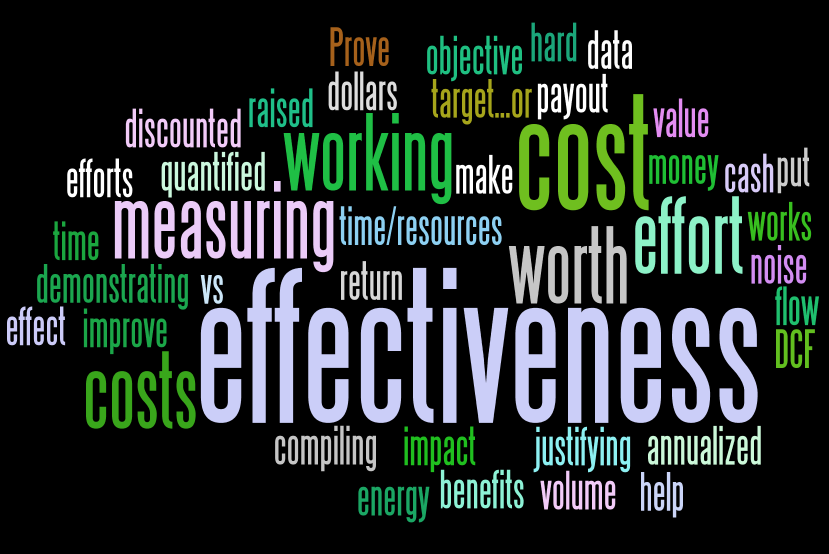Six years ago, we launched the Customer Experience ROI Study in response to a sad but true reality: Many business leaders pay lip service to the concept of customer experience – publicly affirming its importance, but privately skeptical of its value. We wondered... how could one illustrate the influence of a great customer experience, in a language that every business leader could understand and appreciate?
And so the Customer Experience ROI Study was born, depicting the impact of good and bad customer experiences, using the universal business “language” of stock market value. It’s become one of the most widely cited analyses of its kind and has proven to be an effective tool for opening people’s eyes to the competitive advantage accorded by a great customer experience.
This year’s study provides the strongest support yet for why every company – public or private, large or small – should make differentiating their customer experience a top priority. Thank you for the interest in our study. I wish you the best as you work to turn more of your customers into raving fans.
THE CHALLENGE
What’s a great, differentiated customer experience really worth to a company? It’s a question that seems to vex lots of executives, many of whom publicly tout their commitment to the customer, but then are reluctant to invest in customer experience improvements. As a result, companies continue to subject their customers to complicated sales processes, cluttered websites, dizzying 800-line menus, long wait times, incompetent service, unintelligible correspondence and products that are just plain difficult to use.
To help business leaders understand the overarching influence of a great customer experience (as well as a poor one), we sought to elevate the dialogue. That meant getting executives to focus, at least for a moment, not on the cost/benefit of specific customer experience initiatives but, rather, on the macro impact of an effective customer experience strategy. We accomplished this by studying the cumulative total stock returns for two model portfolios – composed of the Top 10 (“Leaders”) and Bottom 10 (“Laggards”) publicly traded companies in Forrester Research’s annual Customer Experience Index rankings. As the following vividly illustrates, the results of our latest analysis (covering eight years of stock performance) are quite compelling:
THE RESULTS
8-Year Stock Performance of Customer Experience Leaders vs. Laggards vs. S&P 500 (2007-2014)  Comparison is based on performance of equally weighted, annually readjusted stock portfolios of Customer Experience Leaders and Laggards relative to the S&P 500 Index. Leaders outperformed the broader market, generating a total return that was 35 points higher than the S&P 500 Index. Laggards trailed far behind, posting a total return that was 45 points lower than that of the broader market.
Comparison is based on performance of equally weighted, annually readjusted stock portfolios of Customer Experience Leaders and Laggards relative to the S&P 500 Index. Leaders outperformed the broader market, generating a total return that was 35 points higher than the S&P 500 Index. Laggards trailed far behind, posting a total return that was 45 points lower than that of the broader market.
THE OPPORTUNITY
It’s worth reiterating that this analysis reflects nearly a decade of performance results, spanning an entire economic cycle, from the pre-recession market peak in 2007 to the post-recession recovery that continues today. It is, quite simply, a striking reminder of how a great customer experience is rewarded over the long term, by customers and investors alike. The Leaders in this study are enjoying the many benefits accorded by a positive, memorable customer experience:
- Higher revenues – because of better retention, less price sensitivity, greater wallet share and positive word of mouth.
- Lower expenses – because of reduced acquisition costs, fewer complaints and the less intense service requirements of happy, loyal customers.
In contrast, the Laggards’ performance is being weighed down by just the opposite – a poor experience that stokes customer frustration, increases attrition, generates negative word of mouth and drives up operating expenses. The competitive opportunity implied by this study is compelling, because the reality today is that many sources of competitive differentiation can be fleeting. Product innovations can be mimicked, technology advances can be copied and cost leadership is difficult to achieve let alone sustain. But a great customer experience, and the internal ecosystem supporting it, can deliver tremendous strategic and economic value to a business, in a way that’s difficult for competitors to replicate.
LEARN FROM THE LEADERS
How do these Customer Experience Leading firms create such positive, memorable impressions on the people they serve? It doesn’t happen by accident. They all embrace some basic tenets when shaping their brand experience – principles that can very likely be applied to your own organization:
- They aim for more than customer satisfaction. Satisfied customers defect all the time. And customers who are merely satisfied are far less likely to drive business growth through referrals, repeat purchases and reduced price sensitivity. Maximizing the return on customer experience investments requires shaping interactions that cultivate loyalty, not just satisfaction.
- They nail the basics, and then deliver pleasant surprises. To achieve customer experience excellence, these companies execute on the basics exceptionally well, minimizing common customer frustrations and annoyances. They then follow that with a focus on “nice to have” elements and other pleasant surprises that further distinguish the experience.
- They understand that great experiences are intentional and emotional. The Leading companies leave nothing to chance. They understand the universe of touchpoints that compose their customer experience, and they manage each of them very intentionally – choreographing the interaction so it not only addresses customers’ rational expectations, but also stirs their emotions in a positive way.
- They shape customer impressions through cognitive science. The Leading companies manage both the reality and the perception of their customer experience. They understand how the human mind interprets experiences and forms memories, and they use that knowledge of cognitive science to create more positive and loyalty-enhancing customer impressions.
- They recognize the link between the customer and employee experience. Happy, engaged employees help create happy, loyal customers (who, in turn, create more happy, engaged employees!). The value of this virtuous cycle cannot be overstated, and it’s why the most successful companies address both the customer and the employee sides of this equation.
To download a copy of the complete Watermark Consulting 2015 Customer Experience ROI Study, please click here.








